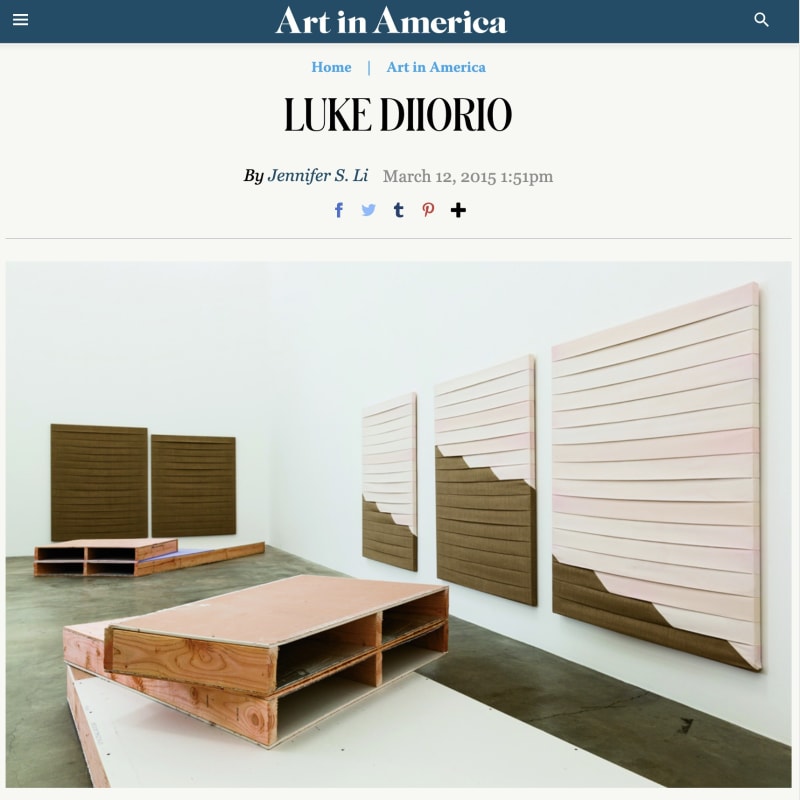New York-based artist Luke Diiorio’s latest solo show addressed a gamut of issues grappled with in art since modernism: singularity versus repetition; representation versus abstraction; and the limitations of the canvas. Born in 1983, Diiorio is a late arrival to the fraught conversations surrounding these issues, and he does not aim to offer answers. Rather, he focuses on creating pleasurable viewing experiences through works that draw from the language of Minimalism and that explore the liminal space between two- and three-dimensional objects.
Large paintings and drywall-and-wood sculptures were choreographed within the single-room gallery to create specific vantage points for the viewer. Minimal, unassuming, and neutral-toned, the paintings were hung low on the walls; several were installed in corners and wall-seams, a decision that emphasized the works’ objectness. Each of these paintings began as a large piece of raw linen or dyed canvas. The material was precisely and rhythmically folded in a staggered accordion style, after which the folded version was mounted onto stretcher bars so that the pleats lay relatively flat, the final composition appearing like a series of horizontal bands. The shadowy spaces between the subtly sagging folds in Untitled (III) and Untitled (IV), all works 2014, resemble the slashes in Lucio Fontana’s paintings, though attest to less violence. In Untitled (run the jewels 2), the emotive variations in the folds’ shades, ranging from pale pink to cream, recall the nuances of a gridded painting by Agnes Martin, whom Diiorio often cites as an inspiration. Much of the canvas is obscured in the folds of these pieces, echoing the fact that viewers do not see the labor behind finished artworks.
The paintings were partly blocked by large, untitled sculptures suggesting remnants of temporary gallery walls. Using materials such as lumber, drywall, insulation and plywood, Diiorio assembled partition-like structures only to cut them open and lay the parts on the floor or lean them against the gallery’s actual walls, emptying his objects of functional purpose. Diiorio’s various approaches to his mediums—employing building materials to create fine art that looks industrial; laboring on works only to obscure them; creating utilitarian-seeming constructions and then evacuating them of use—felt playful, demonstrating a casual attitude that was also conveyed in the earthy shades of flax, cream and pale green that ran through the show.
In his work, Diiorio treats dichotomies and contradictions with a light hand. They are not problems to be solved but simply the state of things, to be accepted and even enjoyed.

